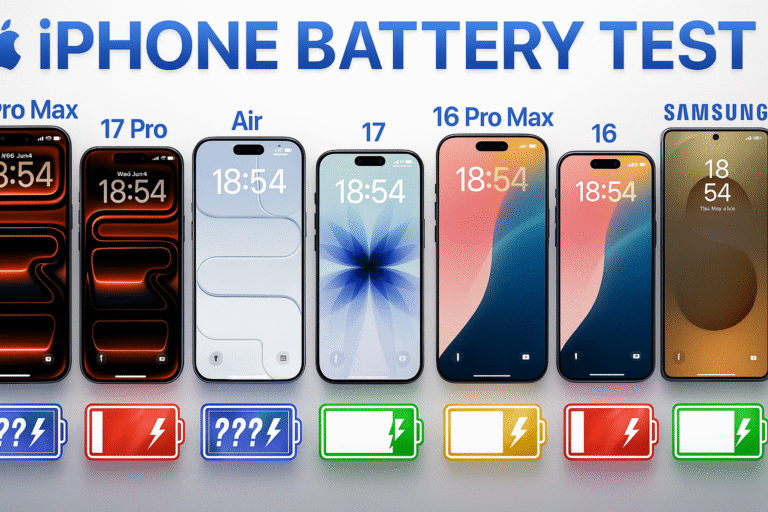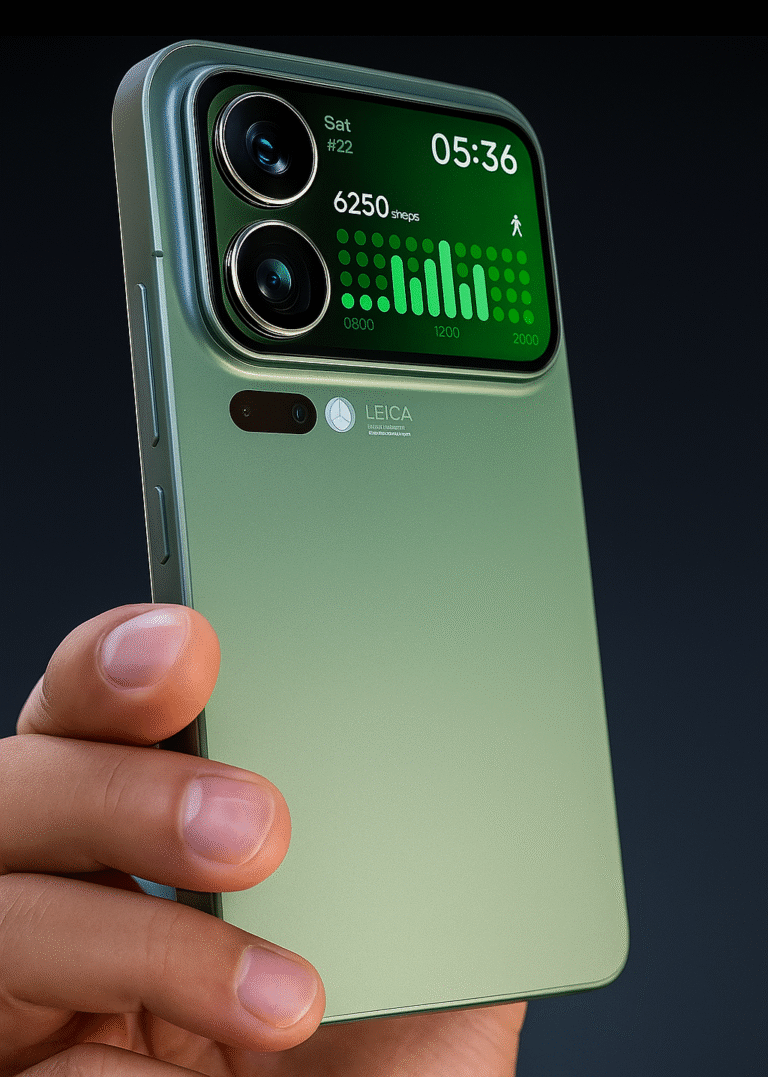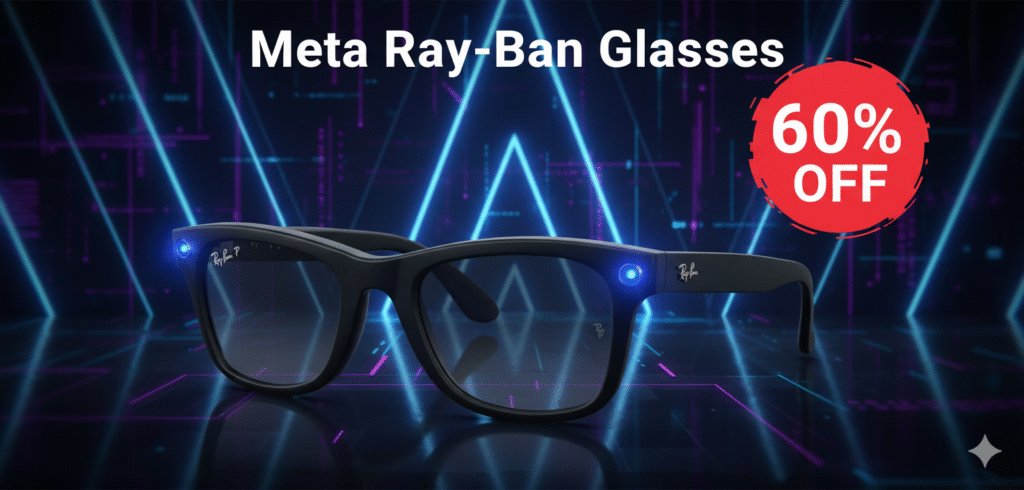
Introduction to Meta Ray-Ban Display Smart Glasses
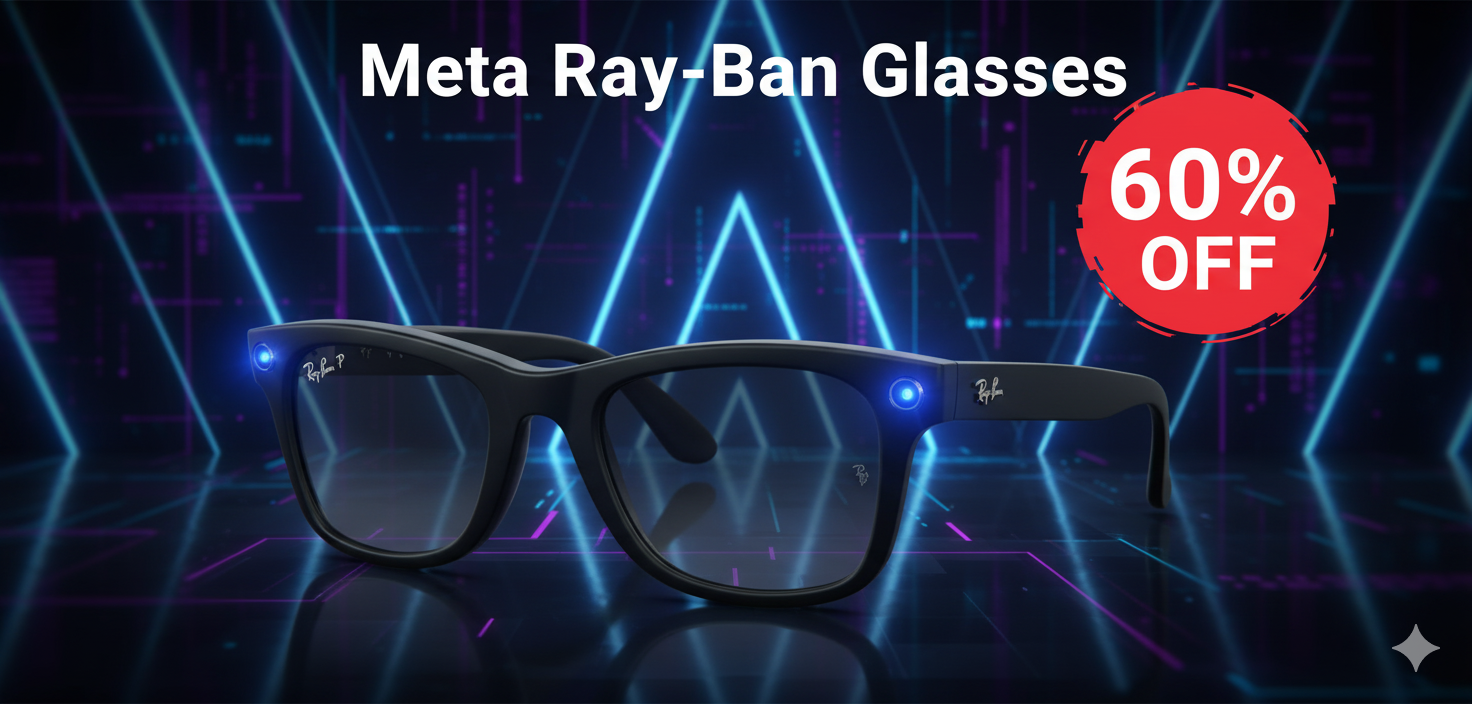
The Meta Ray-Ban Display Smart Glasses have officially arrived with a $315 price tag — and they might just be the first wearable tech that truly convinces people smart glasses are the future. Unlike older attempts at face-mounted gadgets, these glasses come with a transparent interface, a new display, AI integration, and a neural band controller, making them far more practical and polished than expected.
First Impressions: Why These Glasses Feel Different
From the very first wear, it’s clear these aren’t a gimmick. The Meta Ray-Ban Display Smart Glasses feel natural, comfortable, and surprisingly useful. Unlike bulky VR headsets, they weigh only 69 grams — just slightly heavier than a normal pair of Ray-Bans. After wearing them for over an hour, you almost forget you’re using high-tech glasses.
Design & Build Quality
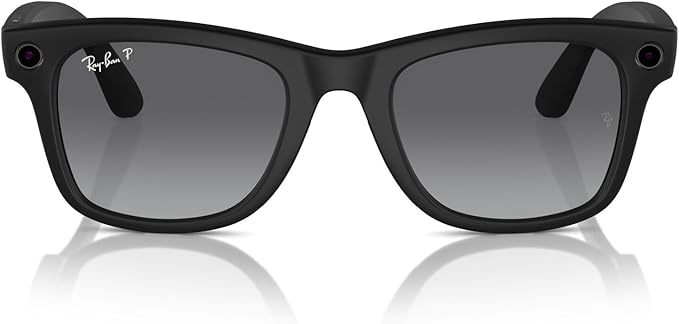
Premium Storage Case
Meta has nailed the accessories. The storage case feels high-end and even folds flat for portability — a thoughtful touch for travelers.
Comfort and Weight
Despite housing cameras, speakers, microphones, and a display, the glasses remain light and wearable. Overextended hinges add flexibility, making them easy to put on and take off.
Transition Lenses
By default, they include transition lenses that automatically tint outdoors and untint indoors, giving both style and practicality.
Display Technology
Brightness & Visibility
The internal display is brighter than any smartphone screen tested so far. This ensures visibility even in outdoor light.
Privacy Advantage of Projection
Because the display uses indirect projection, nobody else can see what you’re viewing — a huge win for privacy.
Neural Band Control System
Hand Gesture Navigation
Instead of a clunky controller, Meta uses a neural band worn on the wrist. It tracks muscle impulses to interpret pinches, double taps, and joystick-like gestures.
Accuracy and Usability
After an hour, gestures feel natural, working with 97% accuracy. Unlike camera-based systems, these gestures work anywhere, even in low light.
Software & User Experience
Meta Maps, AI, and Apps

Currently, the ecosystem is limited. The glasses run Meta’s own apps (Meta Maps instead of Google Maps, Meta AI instead of ChatGPT). There’s no app store yet, but the potential is huge.
WhatsApp Messaging & Voice Control
Reading and replying to WhatsApp messages feels effortless. Thanks to five microphones, voice dictation is incredibly accurate — even whispers are transcribed perfectly.
Real-Time Captions & Translations
This is a game-changer. Glasses can isolate voices and display live captions or translations in real time. For travelers, this could be revolutionary.
Camera and Media Capabilities
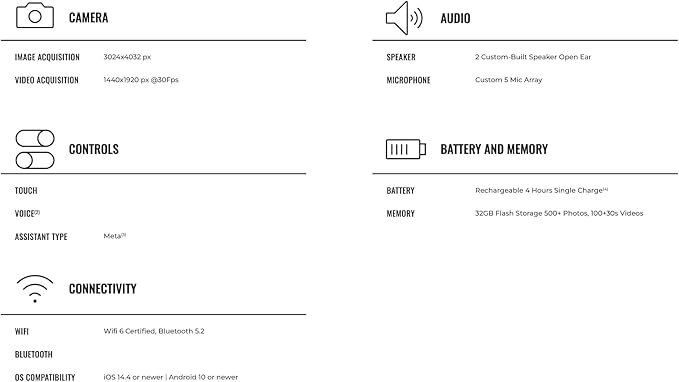
Photo & Video Quality
With a 12MP camera and 3K video recording, the quality is decent but comparable to an older smartphone. There’s a slight capture delay, which could be improved in future models.
Music Playback & Audio Experience
The built-in speakers are better than expected. Music sounds clear, but above 40% volume, others nearby can hear it.
Battery Life & Performance
A custom battery design powers the glasses all day. Despite powering a display and multiple sensors, battery life holds up surprisingly well.
Price and Value for Money
At $315, the Meta Ray-Ban Display Smart Glasses aren’t cheap. However, given their innovation and practicality, they may appeal to early adopters who want to be part of the future of wearable tech.
How Meta Competes with Apple Vision Pro
While Apple’s Vision Pro offers more advanced eye-tracking and immersive experiences, it’s bulky and expensive. Meta’s glasses feel lighter, more discreet, and closer to everyday use — a smart move to normalize smart glasses before Apple releases a cheaper alternative.
Pros and Cons of Meta Ray-Ban Display Smart Glasses
| Pros | Cons |
|---|---|
| Lightweight & stylish design | Pricey at $315 |
| Bright, private display | Limited app ecosystem |
| Accurate neural band control | Camera quality is average |
| Real-time captions & translation | Music playback leaks sound |
| Excellent voice dictation | Reliance on phone for some features |
Final Verdict: Are They Worth Buying in 2025?
The Meta Ray-Ban Display Smart Glasses are not yet a complete smartphone replacement, but they offer a glimpse of what’s coming. With intuitive controls, practical apps, and futuristic display tech, these glasses prove that smart eyewear is finally more than a gimmick.
If you’re an early adopter who loves cutting-edge gadgets, they’re worth it. For everyone else, waiting for the second or third generation may be the smarter move.
FAQs
1. What is the price of Meta Ray-Ban Display Smart Glasses?
They retail for $315.
2. Do the Meta Ray-Ban Display Smart Glasses replace a smartphone?
Not yet. Around 50% of the features still require a paired phone.
3. How does the neural band work?
It detects electrical impulses in your wrist muscles to allow gesture-based control without cameras.
4. Can people see what’s on the display?
No. Thanks to indirect projection, only the wearer can see the screen.
5. How good is the voice dictation?
It’s excellent. With five microphones, it even picks up whispers accurately.
6. How do these compare with Apple Vision Pro?
The Vision Pro is more advanced but bulkier and pricier. Meta’s glasses are lighter and better for daily wear.
Conclusion
The Meta Ray-Ban Display Smart Glasses mark a turning point in wearable technology. While not perfect, they demonstrate how glasses can eventually replace smartphones for everyday tasks. This is only the beginning — and the future looks bright.
